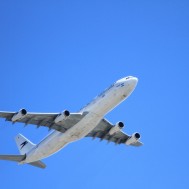Silicone is a tough, versatile rubber material that functions as an effective sealing solution. For the aerospace industry, every part, seal and material used is critical to the success of each application. When it comes to sealing devices, silicone is the ideal material because of its strength and excellent temperature resistance.
Designing and engineering in the aerospace industry is no simple task. It takes a lot of reliable materials and strong execution to keep such large objects safe in the air. With so much at stake in every design, silicone has proven to be a trusted rubber material that can handle these difficult applications. Here’s a closer look at the top ways silicone is used in the aerospace industry.
The Main Benefits of Silicone
Silicone is best known for its thermal stability: this material can withstand extremely high and low temperatures, while still maintaining its flexibility. In the extreme temperature environments of the aerospace industry, silicone thrives.
Some of the other most notable benefits of silicone that are key in aerospace applications include:
- Excellent resistance to acids, bases, chemicals, water, oil and fungus
- Low outgassing
- Flame repellent
- Low chemical reactivity
- Electrical insulation
- Easy to mold into custom shapes
These unique features make silicone a great sealing material that can be utilized in a wide range of applications.
Where to Find Silicone in the Industry
From the engine and outside windows to the cockpit and main cabin, silicone seals are found everywhere. The goal of every aircraft carrier model is to keep crew members and passengers safe, so it’s important to ensure that every vulnerable component is protected from harsh weather conditions found at high altitudes. That is where silicone’s excellent resistance properties come into play. Some of the most common places to find silicone in action include:
- The cockpit for instrumental seals and electrical equipment
- The cabin for lighting, overhead bins and window seals
- Engine gaskets, molded seals and gas turbine seals
- Seals for the door, outer windows and cargo
- Hydraulic seals for the tail, sealant and wings
In every aircraft carrier, high speeds, altitudes and the shock of landing all contribute to loud noises and excessive vibration. Silicone often works inside the aircraft to drown out extra noise and work against vibration to provide comfort and safety to passengers.
Silicone is not only used in planes but also in space capsules as well. From supporting engines that experience high temperatures during liftoff to exterior protection against low temperatures and shock absorption in the atmosphere, silicone is relied on to protect space vessels from any dangerous outside forces.
With the extreme versatility and reliable nature of silicone, it’s no wonder why this material has continued to support the aerospace industry for decades. Today, silicone is still one of the most trusted sealing materials in the industry and is continuously utilized in applications that require difficult sealing solutions.
Want to talk more about silicone in the aerospace industry?
Tweet us @AppleRubber to continue the conversation.
